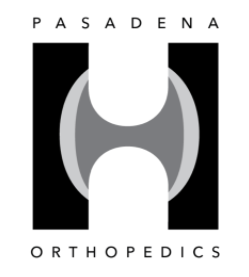Stem Cell Injections & Regenerative Medicine
- Pasadena Orthopedics, Inc.

- Oct 13, 2021
- 3 min read
Updated: Oct 25, 2021
Currently the only FDA approved injection and AATB compliant is being offered at Pasadena Orthopedics, Inc.



The future is regenerative medicine. State-of-the-art medical treatments, such as stem cell therapy and platelet-rich plasma (PRP), have become popular non-surgical options for the treatment of sports injuries, accidents, overuse, heredity or problems associated with an aging body, as well as degenerative arthritis, tendon and ligament damage.
Regenerative medicine is an exciting, newer area of clinical practice that focuses on the natural healing of chronically injured tissues that have become unable to heal themselves. This is accomplished by either replacing damaged, non-functional tissue with healthy cells or organs, or by stimulating the body’s own tissues to regenerate and repair themselves through the introduction of active biochemical messengers (growth factors) and scaffoldings.
Degeneration, or wear and tear, of normal daily activities results in micro injuries to our tissues, especially in weight bearing joints (foot and ankle arthritis) and lower extremity tendons (Achilles Tendinitis) and ligaments (plantar fasciitis). When we are young, the microtrauma from running or tennis, for example, is rapidly repaired by our body’s own defense mechanisms. But as we age, our ability to heal is diminished. Our cells become dormant and lose the ability to divide, and scar tissue forms instead of healthy tissue. Coupled with the fact that we are living longer, this becomes a big problem, especially if we want to remain active.
Our foot and ankle specialist sees chronic problems such as Achilles tendon pain, plantar fasciitis or heel pain, peroneal tendon and posterior tibial tendon pain, anterior tibial tendon pain, foot and ankle arthritis, painful ankle sprains, peripheral neuropathy, and other conditions on a daily basis. Before regenerative medicine or stem cell therapy (stem cell injections) became available, there was often no good conservative treatment option available. Corticosteroid injections were being administered more than they should have, often causing tissues to weaken. Surgery was often required. Now, in many cases these problems can be treated without drugs, cortisone or surgery.
PRP (Platelet Rich Plasma)
PRP (Platelet Rich Plasma) injections work with the similar idea in mind. Platelets are small cells in the blood that help form clots to stop bleeding, and platelet-rich plasma is the patient’s own concentrated platelets. PRP is a growth factor that promotes the healing of bones, cartilage, blood vessels, tendons and tissue, and is becoming more and more popular when treating foot and ankle injuries. PRP creates actual healing because it contains three to five times the concentration of growth factors compared to normal human blood. The board-certified foot and ankle specialist at Pasadena Orthopedics Inc, Dr. Sara Shirazi, will first collect a blood sample from a selected part of the body to acquire the powerful stem cells that promote healing. These stem cells are then injected into the injured area of the foot or ankle, where they replicate and flourish.





Comments